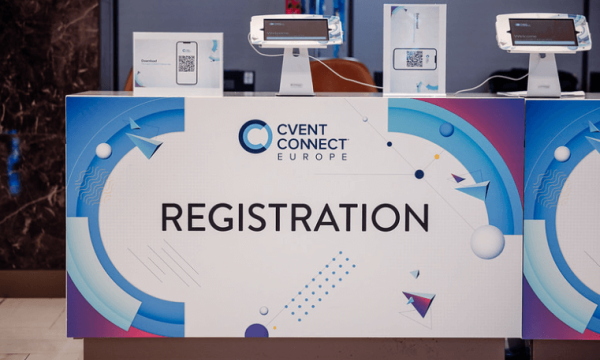Webinars have become a popular way for organizations to reach a large audience and share their expertise and insights on a particular topic.
But before you hit the spotlight, one crucial piece of the puzzle can't be overlooked—the invitation. How you invite your audience to attend can make all the difference between a sold-out show and a virtual ghost town.
Grab your favorite pen and get ready to write an invitation that'll have your audience cheering for encores. In this blog, we'll cover the following:
- What is a webinar invitation?
- How to write a webinar invitation?
- When should you send a webinar invitation?
- How do you announce a webinar?
- Why use a webinar platform to send invitations?
What is a Webinar Invitation?
A webinar invitation is a friendly way to inform people about your upcoming online event. It's an opportunity to share information and insights on a particular topic and connect with a large audience from the comfort of your computer.
Think of it as a virtual get-together where you can share your expertise, answer questions, and engage with your audience. Webinar invitations are also your chance to set the event tone, so making a great first impression is essential.
A well-crafted invitation can make all the difference between a successful event and one that falls flat. It should be eye-catching and informative and encourage the recipient to attend. So, if you're looking to host a webinar, start crafting that invitation and get ready to rock the virtual stage!
The first step to success is understanding who you're inviting. By determining your target audience, you'll be able to tailor your invitation and reach out in the most effective way possible.
So, who's your target audience? Are they tech-savvy millennials who are active on social media? Or are they busy professionals who prefer a more personal touch? Knowing your audience is critical to making sure your invitation hits the mark.
Once you've identified your audience, it's time to start spreading the word. There are several ways to ask people to attend your webinar, and here are some of the most effective methods:
Email: You can't go wrong with a good old email. This tried and tested method is one of the most effective ways to reach multiple people with a single message.
Ensure your subject line is attention-grabbing and your message is clear and concise, highlighting the benefits of attending your webinar. In fact, according to research conducted by HubSpot, 65% of marketers surveyed believe that the most significant factor in determining open rates.
Social Media: If your audience is active on social media, this is a fantastic way to reach them. Platforms like Twitter, LinkedIn, and Facebook allow you to connect with a large audience, so make sure to use eye-catching images, videos, and hashtags to grab their attention.
Personalized Messages: A more personal touch can be just what the doctor ordered for a smaller target audience. Consider contacting them directly with direct messages, phone calls, or face-to-face interactions. This personalized touch can help increase engagement and attendance.
No matter which method you choose, ensure your invitation is clear and concise and highlights the benefits of attending your webinar.
How To Write A Webinar Invitation?
How do I write a webinar invitation, you ask? Well, writing a webinar invitation is an art and a science. It involves making a great first impression and enticing your recipients to join the virtual event.
By following these tips, you'll be able to craft an invitation that'll excite your audience to attend.
Start with a knockout subject line
The first thing your recipients will see is the subject line. So, make it clear, concise, and compelling, using keywords and phrases that pique their interest.
For example, "Discover the insider secrets to boosting your productivity" or "Join us for a transformational experience." Studies show that a subject line with less than 50 characters has the highest open rate, so keep it short and sweet.
Keep it brief but informative
Your invitation should be easy to read, quickly conveying the key details and the value of attending. Use bullet points to highlight the necessary information, like the date, speaker, and time. But don't stop there. Include a brief overview of the topic and what attendees can expect to learn.
For example, "Join us for a 60-minute deep-dive into the world of productivity where you'll discover the latest tools and best practices to work smarter, not harder."
Highlight the benefits
People are more likely to attend if they know what's in it for them. So, spell out the benefits of attending, such as learning new skills, gaining valuable insights, or networking with industry leaders. Use statistics to support your claims, like "95% of attendees reported a significant improvement in their productivity after attending our previous webinar."
Include clear instructions
Make it easy for your recipients to sign up by providing instructions on registering for the webinar. Include a link to the registration page and relevant information, such as cost and platform.
Close with a call-to-action
End your invitation with a strong call-to-action that encourages your recipients to take action, such as "Sign up now to secure your spot" or "Don't miss out on this transformational experience - Register today!"
When Should You Send A Webinar Invitation?
When it comes to hosting a successful webinar, timing is everything. It can greatly impact the response you receive and, ultimately, the success of your webinar.
Target audience schedule: Consider your intended attendees' schedules when determining the best time to send your invitation. For instance, if your target audience is working professionals, there might be better options than sending an invitation on a Monday morning or Friday afternoon, as these are typically their busiest times.
Relevance of the webinar topic: Take into account the subject matter of your webinar. If, for example, your webinar is centered around a seasonal theme like holiday marketing, sending the invitation a few weeks before the holiday makes perfect sense.
Lead time: It's essential to give your audience enough notice so that they can plan to attend your webinar. By sending the invitation 2-3 weeks before the event, you give your audience enough time to add the webinar to their calendars, adjust their schedules if necessary, and make other necessary preparations.
Word-of-mouth is a powerful marketing tool. If your audience is excited about the webinar, they may share the invitation with their contacts, increasing your reach and bringing in more attendees. By giving your audience ample lead time, you also give them time to promote the webinar to their networks.
Competition: Consider the events happening around the same time as your webinars, such as industry conferences or other webinars. If there are a lot of events during that period, send your invitation at a different time when your target audience is less likely to be bombarded with other invitations.
For example, a large industry conference is happening the same week as your webinar. Consider scheduling your webinar for the week before or after the meeting to avoid competing for your target audience's attention.
Marketing Campaigns: Aligning your webinar invitation with other marketing campaigns can maximize their impact and increase attendance. For instance, suppose you have an email campaign in the weeks leading up to your webinar. You can use that campaign to promote your webinar and encourage people to register.
Similarly, if you have a social media campaign running, you can use that to promote your webinar and reach a wider audience. By aligning your campaigns, you can increase the visibility of your webinar and make it more likely that people will attend.
How Do You Announce A Webinar?
Announcing a webinar is essential in promoting and building excitement for your event. The following tips will help you to advertise your webinar:
Use multiple channels: Don't rely solely on one method to announce your webinar. Utilize various channels such as email, social media, and your website to reach as many people as possible.
Provide detail: Be sure to provide enough detail about the webinar to entice people to attend. Your invitation should include the subject matter, speakers, and special features or bonuses.
Create a sense of urgency: Encourage people to sign up quickly by creating a sense of urgency. For example, you can offer early bird pricing or limited spots to motivate people to register promptly.
Use visuals: Use eye-catching graphics, images, and videos to help your announcement stand out and grab attention.
Incorporate storytelling: Share a personal story or case study that relates to the subject matter of your webinar. This will help to build interest and engage your audience.
Partner with influencers: Partner with influencers in your industry or niche to help promote your webinar. It will increase visibility and reach a wider audience.
Make it easy to sign up: Ensure the registration process is straightforward. Provide clear instructions and a simple registration form to make it as effortless as possible for your audience to sign up.
Measure success: Track and measure the success of your event announcement campaign. It will help you identify what's working and what can be improved for future events.
Why Use a Webinar Platform To Send Invitations?
Many webinar platforms have built-in email marketing tools that automate sending webinar invitations. It can be valuable for sending out your webinar invitations and tracking their performances.
With these tools, you can create and save templates for your invitations, set up automation triggers based on specific events or dates, and even personalize your messages based on subscriber data. It will save you much time and effort compared to manually sending out invitations.
For example, you can set up an automation workflow that sends an invitation to your email subscribers two weeks before the webinar date, followed by a reminder email one week before the event, and finally, a final reminder email the day before the webinar. These automated emails ensure that your subscribers receive timely reminders about your event, and it reduces the risk of them forgetting or overlooking your invitation.
Additionally, webinar marketing tools provide valuable insights into the performance of your webinar invitations, such as open rates, click-through rates, and conversion rates. This data can help you to optimize your invitations and improve their effectiveness over time.
Conclusion
To wrap things up, hosting a webinar can be an impactful way to connect with your audience and share your expertise. A well-crafted invitation is a key to success, and by following the tips outlined in this blog, you can write an invitation that will generate excitement and increase attendance. Remember to start with a clear subject line, keep it brief but informative, highlight the benefits of attending, and include clear instructions on registering. With these tips, you'll be well on your way to taking the virtual stage and hosting a successful webinar that your audience will love!







